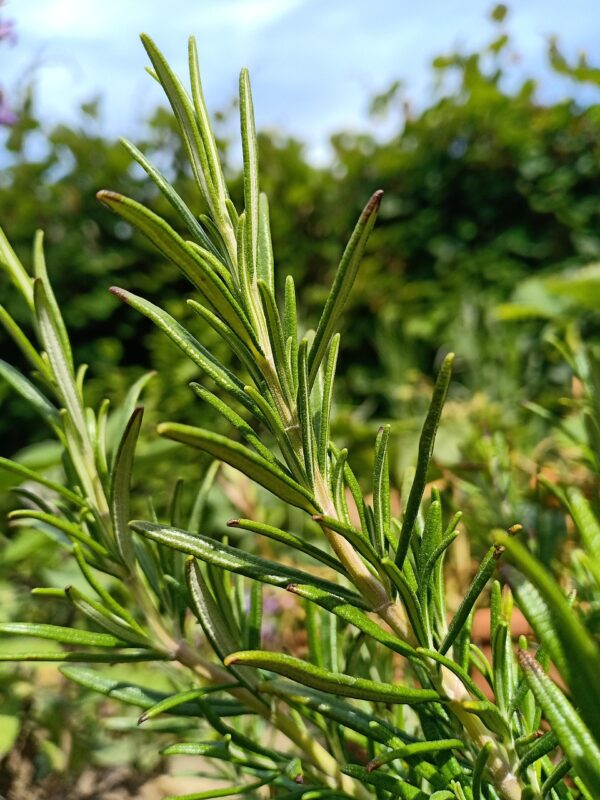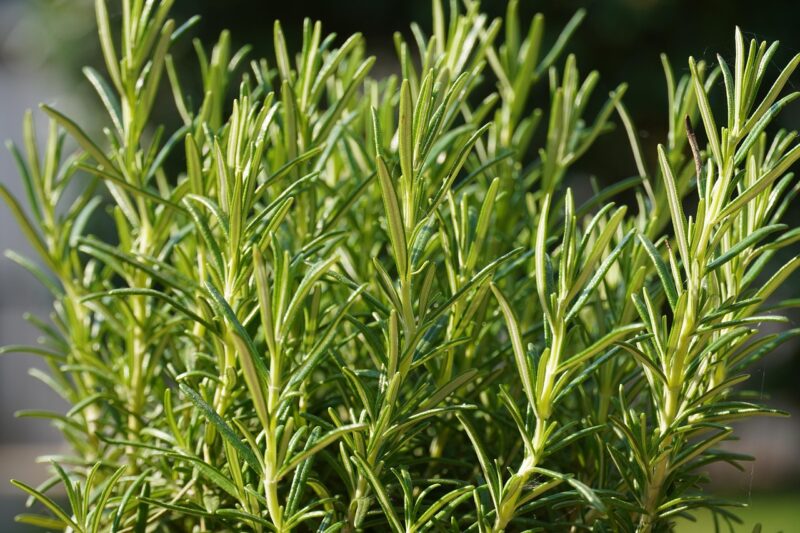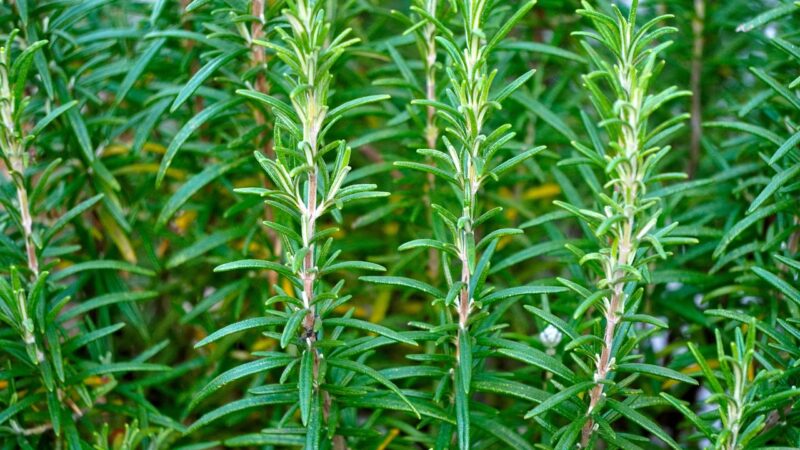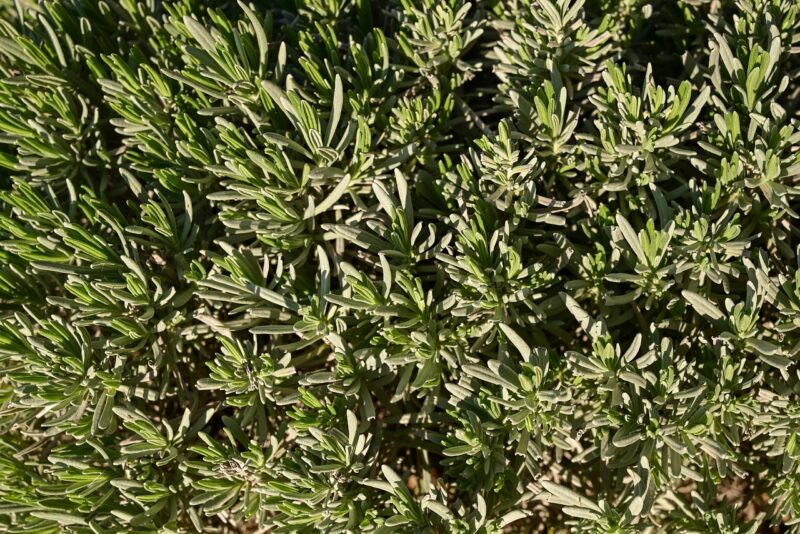In this guide, we’ll explore the essential factors to consider when planting rosemary, the ideal locations, and some tips to help you cultivate this delightful herb successfully.
Understanding Rosemary’s Preferences

Before deciding where to plant rosemary, it’s essential to understand its environmental needs. Rosemary thrives in warm, sunny conditions and is well-adapted to Mediterranean climates. Here are some critical preferences to keep in mind:
Light Requirements
Rosemary loves sunlight. Ideally, it should receive at least 6 to 8 hours of direct sunlight each day. This herb thrives in full sun, making it crucial to choose a planting location that allows for abundant light exposure. Insufficient light can lead to leggy growth and diminished flavor, so look for the sunniest spot in your garden or patio.
Soil Type
The type of soil you plant rosemary in significantly contributes to its success. Rosemary prefers well-drained, sandy or loamy soils with a pH level between 6.0 and 7.0. Heavy, clayey soils can lead to root rot due to poor drainage. If your native soil isn’t suitable, consider amending it with sand, perlite, or gravel to improve drainage. Additionally, raised beds can offer control over soil quality and drainage.
Temperature Considerations
Rosemary is a hardy herb that can withstand mild frost. However, extreme cold can damage the plant, especially if you’re in a region with harsh winters. Ideally, rosemary thrives in temperatures between 70°F and 80°F (21°C to 27°C). If you live in an area with cold winters, consider planting rosemary in pots that can be moved indoors or to a sheltered area during cold spells.
Ideal Locations for Planting Rosemary
Now that you understand rosemary’s preferences, let’s delve into the best locations for planting this aromatic herb. Whether you have a spacious garden or a small balcony, there are numerous options available.
Garden Beds
If you have a garden, rosemary can be a fantastic addition to your herb bed. When selecting a garden bed location, aim for:
South-Facing Slopes: These slopes receive ample sunlight and excellent drainage, making them perfect for rosemary. The warm microclimate allows the plant to thrive and flourish.
Container Planting: For those who may have limited garden space, consider planting rosemary in containers. Choose pots with drainage holes and fill them with well-draining potting mixture. This option allows you to position the herbs anywhere that receives enough sunlight, including patios, balconies, and porches.
Herb Spiral
Creating an herb spiral is an innovative way to optimize limited space while accommodating various plants with different needs. In constructing an herb spiral, you create a vertical garden that varies in moisture and sunlight levels. Plant rosemary at the top of the spiral where it will receive full sun, and you can place herbs that prefer moister conditions further down.
Raised Beds
Raised beds provide excellent drainage and soil control, allowing you to create the optimal growing environment for rosemary. When constructing a raised bed, ensure that the base is elevated and the sides are made from rot-resistant materials. Fill it with a mixture of quality topsoil and sand or gravel to optimize drainage and promote healthy root development.
Rock Gardens
Rosemary’s nature suits rock gardens, which offer well-drained conditions akin to its native habitat. Plant rosemary among stones and pebbles, where it can bask in the sun and drain excess moisture naturally. Rock gardens require minimal maintenance, making them an ideal landscape choice for low-effort gardeners.
Choosing Containers for Potted Rosemary
If you opt to grow rosemary in containers, selection is crucial. The right pot can significantly influence the herb’s growth and overall health. Here are some key considerations:
Pot Size
Choose a container that is at least 12 inches in diameter. Rosemary’s roots need space to spread out and establish themselves fully. A larger pot also helps retain moisture but prevents waterlogging by allowing excess liquid to drain quickly.
Drainage
Ensure that whichever container you choose has adequate drainage holes. This prevents water from pooling at the base, which can lead to root rot. If your pots don’t have drainage holes, consider drilling some or selecting another option.
Material Selection
Choose pots made from breathable materials, as rosemary prefers aeration around its root zone. Terracotta and unglazed clay pots are excellent choices because they allow moisture to evaporate from the sides—helping to prevent overwatering.
Care Tips for Successful Growth
Once you’ve determined where to plant rosemary, understanding its care is essential to foster its growth. Here are some crucial care tips:
Watering Practices
Rosemary doesn’t like to sit in water. It’s vital to allow the soil to dry out between watering sessions. When watering, monitor the top inch of the soil; if it feels dry, it’s time to give your rosemary a drink. During the growing season, rosemary generally requires more water. However, reduce watering in the fall and winter months when the plant is dormant.
Fertilization
Rosemary is not a heavy feeder, but providing some nourishment can be beneficial. Opt for a balanced, slow-release fertilizer in early spring as the plant begins its active growth. Avoid excessive nitrogen, as it can lead to lush foliage with little flavor.
Pruning
Regular pruning encourages bushier growth and enhances the flavor of the leaves. Trim rosemary after flowering to maintain its shape and remove any dead or woody stems. Pruning stimulates new growth, resulting in a healthier and more productive plant.
Pest and Disease Management
While rosemary is relatively resistant to pests and diseases, it can still fall prey to issues like aphids or spider mites. Regularly check the leaves for pests and shower the plant with water to remove any unwanted visitors. If necessary, use organic pesticides or insecticidal soap to treat severe infestations.
Regional Considerations
Your location also influences where and how to plant rosemary successfully. Different climates may require specific attention to ensure this herb flourishes.
Mediterranean Climates
In regions with mild winters and dry summers, rosemary is an ideal choice for growing outdoors year-round. Be mindful of irrigation practices during the peak of summer to avoid dry soil.
Temperate Zones
For gardeners in temperate zones experiencing cold winters, consider growing rosemary in pots that you can bring indoors when temperatures drop. Indoors, place the container in a well-lit area to allow for continued growth throughout the winter months.
Tropical Areas
In tropical climates where humidity is higher, rosemary can struggle with excess moisture. Plant rosemary in well-draining soil by amending it with sand or perlite to promote drainage. Elevated planting beds or pots can further mitigate water issues.
Companion Planting

Considering companion planting is another way to maximize the potential of your garden. Rosemary can benefit from being planted near various other herbs and vegetables due to its pest-repelling qualities.
Suitable Companions
Cabbage Family: Rosemary is an excellent companion for plants like kale and broccoli, as its strong scent helps deter pests that target these crops.
Carrots: Planting rosemary alongside carrots can enhance their flavor while discouraging pests.
Beans: Rosemary and beans share space well, promoting growth and minimizing pest-related issues.
Plants to Avoid
While rosemary has its companions, some plants prefer not to mingle. Basil, for instance, can compete with rosemary for nutrients, potentially impacting the growth of both. Similarly, sensitive herbs like parsley may not thrive near rosemary due to variations in moisture and light preferences.
How to Harvest Rosemary
Harvesting rosemary effectively is essential for maintaining its health and productivity. Here are guidelines to ensure you gather the herb without damaging the plant:
Timing
The best time to harvest rosemary is just before flowering when the essential oils are at their peak. This is typically in late spring to early summer but varies slightly based on your region.
Method
Use clean, sharp scissors or pruning shears to snip sprigs of rosemary. Cut just above a pair of leaves to encourage compact growth. Avoid cutting too much of the plant at once; this can stress the rosemary and hinder its growth. Harvesting 25%-30% of the plant is usually safe.
Storing Rosemary
Once harvested, rosemary can be used fresh or dried for later use. To dry, hang the sprigs upside down in a dark, well-ventilated area. Once fully dried, remove the leaves and store them in airtight containers.










